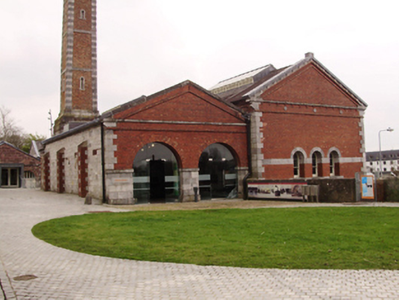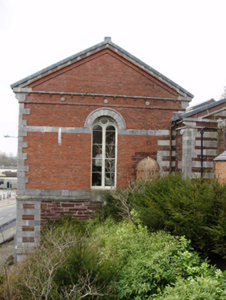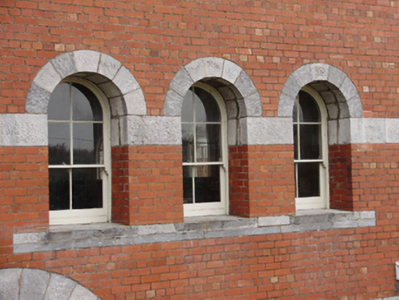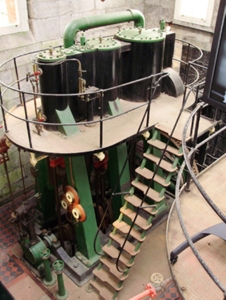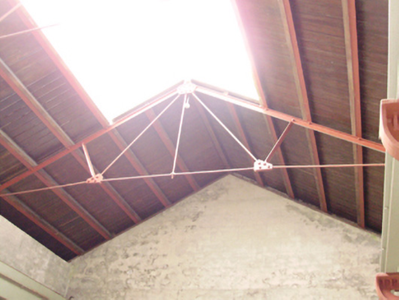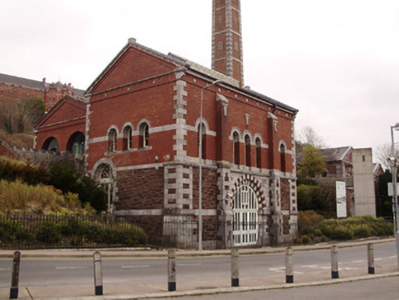Survey Data
Reg No
20865035
Rating
Regional
Categories of Special Interest
Architectural, Social, Technical
Original Use
Engine house
In Use As
Heritage centre/interpretative centre
Date
1905 - 1907
Coordinates
164961, 71502
Date Recorded
07/03/2011
Date Updated
--/--/--
Description
Detached three-bay double-height former engine house, built 1907. Now in use as interpretive centre. Pitched slate roof with monitor light and cut limestone eaves course and coping. Roughly dressed red sandstone walls to ground floor with limestone platband and string course. Red brick walls laid in English garden wall bind to upper section with cut limestone platbands and quoins. Buttresses to south elevation with limestone and sandstone to lower half and red brick to upper half. Round-headed window openings with cut limestone hood mouldings to upper section having four-over-two timber sliding sash windows. Round-headed window opening with limestone hood moulding and timber traceried window to east elevation. Round-headed door opening to west elevation with cut limestone block-and-start surround to half-glazed timber door with overlight. Segmental-headed opening to south elevation with polychromatic stonework, now having fixed-light window. Open roof to interior with cast-iron trusses and cast-iron steam engines. Located within former water works complex.
Appraisal
Cork Corporation Waterworks was the oldest continuously used municipal water supply site until its decommissioning in 1993. It is the best-preserved Victorian water pumping station in Ireland, though its earliest operations date to the 1760s, with water being pumped from the river into storage reservoirs in the hillside. The nineteenth-century saw the city growing at a significant rate placing increasing pressure on its water supply. The engine house was constructed as part of alterations to the site in 1907 and retains much original fabric and its double-height form. The varied materials used to its exterior creates much intentional textural variation, making it a striking feature on the Lee Road. It is an important part of the city’s civil engineering heritage.

